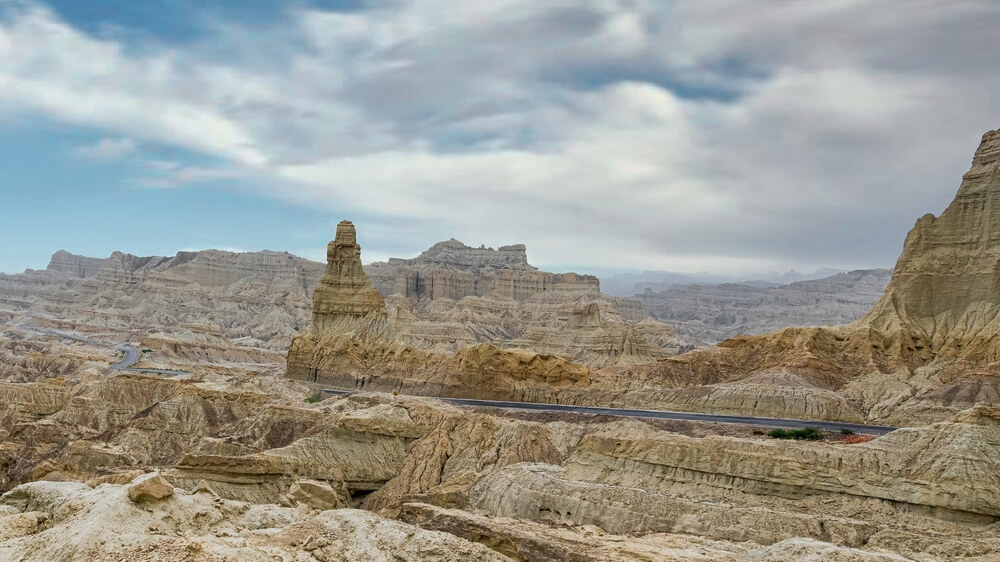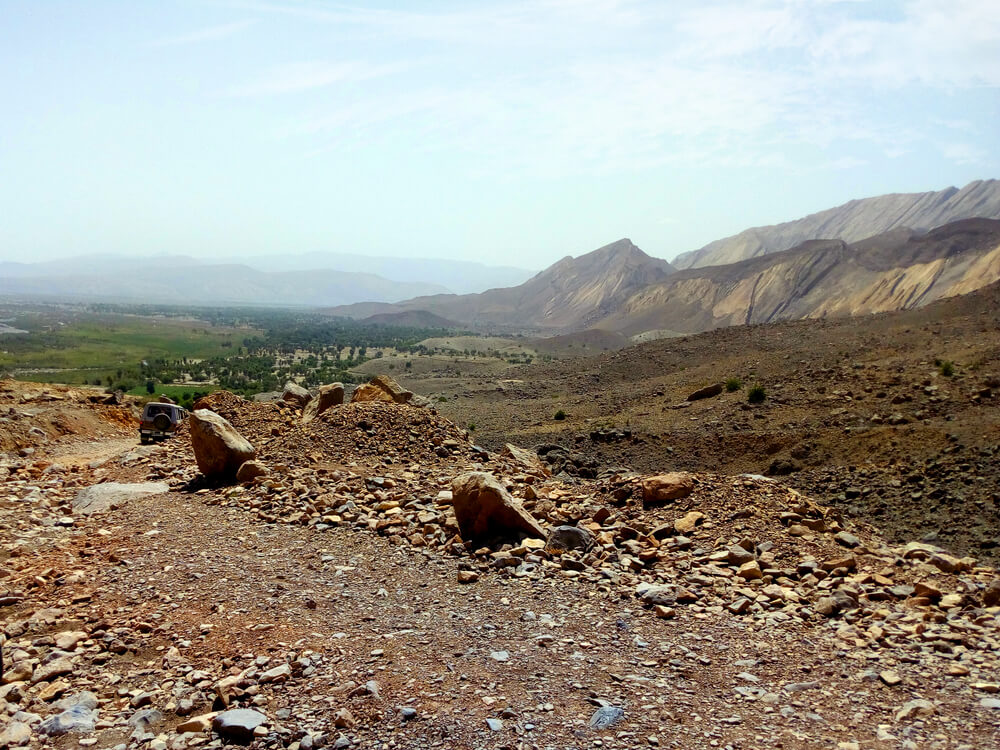Read more
Balochistan
Balochistan, westernmost province of Pakistan. It is bordered by Iran (west),
by Afghanistan (northwest), by Khyber Pakhtunkhwa and Punjab provinces
(northeast and east), by Sindh province (southeast), and by the Arabian Sea
(south).
Although an indigenous population of the region passed through the Stone
and Bronze ages and was part of Alexander the Great’s empire, the
Baloch people themselves did not enter the region until
the 14th century ce. The Baloch and Pashtun (Pathan) people constitute
the two major and more distinct ethnic groups; a mixed ethnic stock,
mainly of Sindhi origin, forms the third major group. Balochi,
Brahui, Pashto, and Sindhi are the main languages. Balochistan
was established as a separate province in its present form in 1970.
It is the largest and most sparsely populated province in Pakistan.
Its capital is Quetta.
There are four major physical regions in Balochistan.
The upper highlands of the central and northeastern areas are
bounded by the Sulaiman Range to the east and the Toba Kakar
Range to the northwest. The lower highlands include the eastern
slopes of the Sulaiman Range; the lower ranges of the Makran, Kharan,
and Chagai on the west; and the Pab and Kirthar ranges on the southeast.
These highland regions are primarily inhabited by nomadic herdsmen.
Flat plains extend northward along the coast into the mountains; in the
northwest an arid desert region consists of the Chagai, Kharan, and
Makran deserts and the swamps of Lora and Mashkel. The upper
highlands drain into the Indus River, and the lower highlands drain
northward into the swamps or southward into the Arabian Sea. Outside
the influence of the Asian monsoon, most of the province is dry with
continental extremes of heat and cold.
Agriculture is limited by the scarcity of water, power, and adequate
transportation facilities. Wheat, jowar (sorghum), and rice are the
major food crops, and fruits are the principal cash crops. Sheep raising
employs the great majority of the population and occupies most of the land.
The sheep provide a high-quality wool, part of which is exported. Almost
all industry is small-scale; it includes cotton and woolen manufacturing,
food processing, carpet making, textile and leather embroidery, small
machinery and appliance manufacturing, and handicrafts. The transportation
network is poorly developed, but roads connect the major towns, and Quetta
is connected by road to the ocean port of Karachi in Sindh province. Quetta is
a centre of the railway network, and its airport offers domestic service.
The University of Balochistan was established in Quetta in 1970.
The Balochi Academy and the Pashto Academy,
also in Quetta, promote the preservation of traditional
cultures. Area 134,051 square miles (347,190 square km). Pop. (2003 est.) 7,450,000.
Famous Places To Visit In Balochistan
is the largest southwestern Pakistan province known for its
rich culture and histBalochistan ory. It is home to several famous
places that attract visitors from all over the world. From the breathtaking
landscape of Hingol National Park to the white sand beaches of Gwadar, Balochistan has something to offer everyone. Whether you’re looking
for a fun adventure or a sun bath, there are plenty of Places to visit in
Balochistan that will give you an unforgettable experience. So in
this blog post, Discover the unbelievable beauty and adventure
of Balochistan’s famous places like the Pishin Village, Sibi and Zohb.
Balochistan Weather
The weather in Balochistan varies significantly
throughout the year, with hot summers and cool winters.
Summers (April – October) are generally hot and dry, with
temperatures reaching 40°C (104°F). Winters (November – March)
are cold and dry, with temperatures dropping below -2°C (28°F).
Rainfall is rare, mainly during the monsoon season, with the highest
precipitation occurring in the northern parts of the province.
One of the coldest regions in Balochistan and Pakistan is Quetta.
On January 8, 1970, Quetta experienced its coldest temperature
of -18.3 °C (-0.9 °F). Wintertime temperatures often reach
around -10 °C (14 °F), with occasional dips down below -15 °C (5 °F).
When Should You Travel to Balochistan?
The best time to visit Balochistan is in the winter (December to February)
when the weather is mild and calm. The summer months (May to August)
can get hot and humid. It is also best to avoid traveling to Balochistan during
the monsoon season (July to September), as the province can be prone to
flash floods.
How do I Get to Balochistan from Islamabad?
The best way to get to Balochistan from Islamabad is to take a
domestic flight to Quetta, the capital of Balochistan. Several domestic
airlines offer flights from Islamabad to Quetta, including Pakistan International
Airlines, Airblue, and Safi Airlines.
You can also travel to Balochistan by taking a bus.
Several bus companies offer daily services between the two cities.
You can book tickets online or purchase them from the bus station.
The journey typically takes around 17 hours, depending on the traffic
conditions.
What are the Best Things to do in Balochistan?
There are many things to enjoy in Balochistan. Some top activities
and attractions include visiting the Hingol National Park to see the
unique flora and fauna, exploring the ancient ruins at Mehrgarh, and
visiting the beaches in Gwadar to relax and enjoy the beautiful scenery.
Other popular activities include:

- Visiting the Quetta Clock Tower and the Bolan Pass.
- Hiking in the Ziarat District.
- Enjoying the local cuisine.
25 Balochistan Famous Places in 2023
Balochistan is a beautiful region of Pakistan that is full of surprises.
Balochistan is home to some of the most well-known locations in the
world due to its magnificent scenery and majestic mountains. From
the lush green meadows of Quetta to the stunning beaches of Gwadar,
there are plenty of places to visit in Balochistan. Whether you’re looking
for an adventure or want to explore the beauty of Balochistan, there is
something for everyone. From the highest mountain peaks to the deepest
valleys, Balochistan has plenty of hidden gems that will take your
breath away. So Let’s look at the Places to visit in Balochistan one by one.
Pir Ghaib Waterfalls Bolan
Pir Ghaib is a popular tourist destination located in the Bolan
District of Balochistan, Pakistan. The area is known for its natural
beauty and is home to several attractions, including the Pir Ghaib Waterfalls.
The waterfalls are scenic and peaceful, surrounded by lush vegetation
and stunning rock formations. The waterfalls are known for their
crystal clear waters and beautiful views.
They are a popular destination for picnics, hiking, and
sightseeing.
Moola Chotok Balochistan
Moola Chotok is a small landform located in the Khuzdar District
of Balochistan, Pakistan. The ravine is known for its natural beauty
and scenic surroundings and is a popular destination for travelers and
nature lovers.





0 Reviews